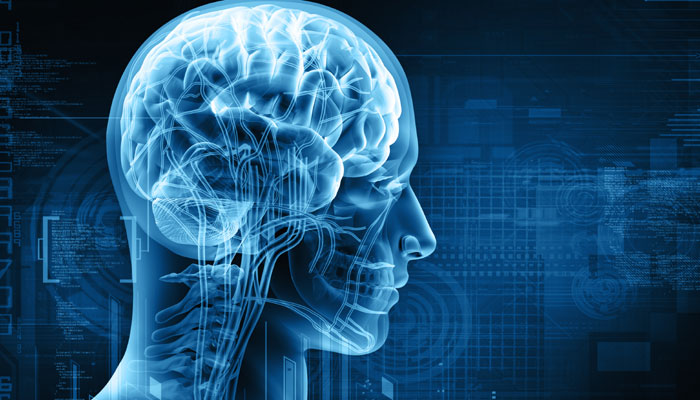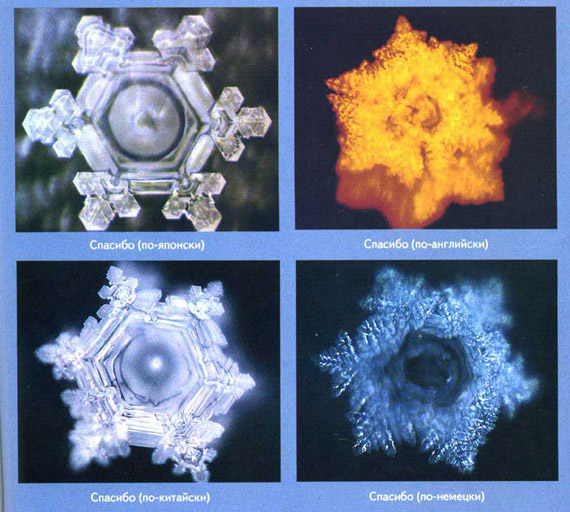Dpdg yourself. desensitization and eye movement processing - a psychotherapy method for the treatment of post-traumatic stress disorders
DPDG (desensitization and processing by eye movements) or in English EMDR - One of the newest methods of psychotherapy, which appeared at the turn of the 80-90s. What is its essence? In humans, like animals, there is a natural mechanism for processing information that is activated during the REM phase (this is a scientifically proven fact). It is in this phase that we dream, and literally - our eyes move quickly from side to side. Therefore, it is not in vain that they say: “Morning is wiser than evening” - in the morning you often look at a problem from a different angle.
Unfortunately, the processing mechanism is imperfect and for various reasons can “freeze” the traumatic experience in the unconscious, together with all the information related to it: images, emotions, physical sensations, thoughts about yourself and the world around us associated with the traumatic event.
In people with panic attacks, ALWAYS there is a traumatic experience that causes them, but it is extremely rare that the connection of anxiety with this experience is realized. These are not necessarily some bright unpleasant childhood events. It is possible that, as a child, a person simply did not chronically receive sufficient care, support and attention, he was often criticized and made high demands. But for simplicity, I will take an example of panic attacks caused by severe shocks.
For example, a girl in kindergarten was terribly punished for describing herself in bed: stripped and forced to stand in front of other guys naked. This incident injured the girl so much that her consciousness was not able to process this experience. As a result, all the memories that belonged to the event: visual images of the teacher and children laughing at her, the sound of laughter, feelings of great shame, fear and suppressed rage, thoughts of her inferiority, loneliness, helplessness, aggressiveness of others, etc., are the girl unconsciously " locked "in a container somewhere deep in her brain, to never again experience anything like that even in her memories.
The neural structures that store this “frozen” clot of injury are isolated from other parts of the cerebral cortex, so at a conscious level, we may not even remember what happened.
In the case of our girl, over time, she could either completely forget about the punishment in the kindergarten, or remember, but at the same time think that this event did not affect her in any way. After all, memories do not bring much concern, or even completely neutral.
But what happened does not disappear without a trace, since the emotional "charge" of the situation has not disappeared. Periodically, feelings will erupt into consciousness, making themselves felt in a variety of ways. In particular, a person may begin panic attacks. Moreover, since the neural network that stores the cause of anxiety is isolated from the rest of the brain, seizures can occur completely unexpectedly and without regard to current circumstances. However, they may arise by association.
For example, with our girl: panic attacks in her are most likely to begin in adolescence, when peer opinion is very important and it is embarrassing to be different from everyone (and the unconscious remembers how cruel the children were with her in kindergarten ...). The girl will begin to experience panic attacks with the same feelings that she had then during the punishment in kindergarten: she will be ashamed, scared, lonely, hopeless. In this case, most likely she will not see any connection with that case.
Panic attacks can begin at completely different times and under different circumstances, especially if the girl had a lot of traumatic situations in childhood. In this case, we can say that the container with alarm periodically overflows and it begins to beat over the edge (and we remember that there is very little free space in it - everything is given for storage of childhood injuries). But panic can occur in girls and by association in similar circumstances. For example, if you need to answer at the blackboard in front of the class, use the school toilet, change clothes before the physical education lesson in front of other girls ...
How does DPDH therapy work for panic disorder? With the help of eye movements and a specially constructed conversation, we find and process blocked neural networks one by one - the very containers with traumatic experiences. As a result, a person gradually realizes the connection between panic attacks and certain events that traumatized him in the past, remembering and reshaping them. But work can take place completely at an unconscious level - the brain processes negative experience without the participation of consciousness. Usually this happens at the level of sensations in the body: a person during a session does not remember anything specific, but at the same time experiences various emotions and bodily sensations. So the same container with alarm is freed. The course of the process for each person is individual, depends on the characteristics of the psyche, and in any case has a positive effect. There is no need to tell the therapist in detail about the situation - this is an absolute plus in DPDH.
1987. Experiencing a difficult period in life (cancer, divorce from her husband), the American psychologist Francine Shapiro experienced real suffering: she was tormented by obsessive fears and nightmares. Once, while walking in the park, she noticed that quick movements of her eyes from left to right facilitate her condition. She continued research that confirmed: the method helps with post-traumatic stress. Shapiro defended her thesis on the topic of DPDH, and in 2002 received the Sigmund Freud Prize, the most prestigious award in the field of psychotherapy.
Definition

DPDH is a psychotherapeutic technique that is used to treat emotional trauma. It is designed primarily for the treatment of post-traumatic syndrome, addiction syndrome or depression caused by the loss of a loved one. At the time of the injury (accident, terrorist attack, natural disaster, physical or moral violence), the human brain remembers all the details related to this event. Memories of them continue to haunt him, taking him out of emotional balance. The DPDG method helps to improve the condition of the client, allowing you to identify feelings and images associated with the painful experience of injury, and change the perception of this event.
Operating principle
The DPDH method is based on the neurological concept of psychological trauma and allows you to accelerate the healing of words. A traumatic event blocks the processes of self-regulation of the psyche: images, sounds or bodily sensations associated with a painful experience seem to “get stuck” in it, so that a person again and again experiences horror, pain, fear and helplessness. Eye movement helps synchronize the rhythms of the cerebral hemispheres. And eye movements from side to side cause alternate activation of the hemispheres and synchronous processing of information. The processes of natural self-regulation are restored, and the brain independently completes the work.
Working process
After explaining the plan of action to the client, the therapist suggests that he first think about something good. Then a “target” is chosen: an event from the past that does not give him rest, or the current situation, which serves as an object of concern (phobias or anxiety attacks). By focusing on a painful situation, the client focuses on the therapist's hand, moving from left to right. During each session, he must follow up with 15 such rhythmic movements, wide and precise (the width of the span is about 1 m). In the pauses between exercises, you can talk about this event and evaluate the intensity of the emotions experienced about it. Classes are held until the client notices a decrease in the severity of the experience. During the procedure, the specialist also helps to form new, positive images instead of those that were associated with the injury. The memory of the injury does not disappear, but ceases to hurt the person.
Indications for use
For those who experience severe post-traumatic stress (after a terrorist attack, violence or disaster), as well as when an event in the past left a painful memory. This technique can also help with disorders such as addiction, anorexia, or depression. Contraindications: severe mental conditions, some heart and eye diseases.
How long? How much is?
DPDH is more often used in combination with other methods and helps to relieve the severity of the experience and accelerate the healing process. DPDG is not used at the first meeting with the client: first you need to get an idea of \u200b\u200bthe history of the disease and the nature of the symptoms. Sometimes one session of DPDG is enough. The session lasts 1 hour and costs from 1500 rubles
EMDR (desensitization using eye movements) is an informative process psychotherapy that was created and tested in the treatment of Post-Traumatic Mental Disorders.
I am very, very, very glad that this technique has finally reached Russia. Firstly, because I think this method is very effective and environmentally friendly. Secondly, it does not require the highest qualification of the psychologist who applies it (in the light of the problem of psychotherapeutic lamerism in the country, this is a very relevant point). Thirdly, this method is short-term.
Have I tried?
For the first time - in 2009. I first studied all the available information, including the book by Shapiro (the author of the methodology), read everything that got on the network. I had a fear that as a result of EMDR, changes will occur to me that I am not ready for. Fear did not come true. This is one of the things that EMDR I really love: it is a very organic technique. Since this is to some extent the launch of the system of self-healing of the psyche, then for each session exactly as much is done as it is ecologically and harmoniously at the moment.
In total, I went through about 10 sessions, in addition to what I still do in therapy. Ask questions.
How it works
There is a theory that traumatic experience is stored in our brain in the form of isolated neural clusters that are not included in the general system. Something like a cyst. As a result of this, an isolated cluster lives its own life, reacting to events as if the trauma situation had not yet ended. Just exactly like that grandfather from a joke who did not know that the war ended in the last century, and continued to partisan, derailing the trains. EMDR allows you to integrate this isolated cluster into a common system. That is, to relocate the partisan grandfather to the current reality, so that he assimilates, leaves his military experience in the past and joins in peaceful life.
It is like a guided dreaming process. That phase of sleep, when the body repairs itself. Only you do not sleep and are present with all this. Nothing strange or terrible happens. No glitches, no insights, no insights. The condition is more relaxed than tense. It is important to relax and not control the process, just let the emerging thoughts, pictures or feelings appear and move where they are moving. This is similar to when the computer optimizes disk space: pieces of files fly back and forth.
Some people feel after the session as if they were unloading cars. Some people feel well rested, as if they had a good sleep (well, for this I also love EMDR).
You can’t say in advance how many sessions are required. Sometimes it happens that a major problem is solved in a single session. Sometimes it happens that you need a few. The process itself, launched during the session, continues for another two weeks, so on average changes are felt after 10 days, and often felt suddenly: bang - and it stopped hurting. Or it stopped soaring. Or somehow, everything was fine in my head so that it finally let go. It is important to trust your system in that it will do everything right and when necessary.
How does it help
This works best and fastest with adult injuries: for example, painful childbirth or the consequences of an accident, disability, rape. More time is required for childhood injuries because they are very multi-layered. For childhood injuries, EMDR may not be enough, because EMDR does not imply the formation of a long-term attachment to a therapist, building trust and responding to all sorts of feelings and emotions. And these are important parts of working with injury.
It works well with negative beliefs, including systemic ones, such as "I do not represent any value", "It is impossible to love me" etc. With one caveat: with the exception of cases where this belief plays a big role in your life, and without it, life can collapse, because it has nothing to stand on.
In which cases emdr will not work:
- The method does not suit you for some reason.
- If you are working with an injury and are not yet ready for "life after an injury." Then you must first draw up a plan for a new life, but it turns out that without injury there is nothing more to live for, in which case the psyche will resist healing.
What it is not:
- This is not hypnosis.
- These are not lucid dreams.
- This is not esotericism or shamanism.
This is the targeted use of the "immune system" of the psyche to work with a given problem.
pros
- Several sessions are enough to handle one problem. Minimum, one, maximum, 10-15.
- In order to use this method, it does not take a long time to build a working alliance with the therapist. In particular, because it is not the therapist who works, but the psyche of the client. The therapist ensures the safety and correctness of the procedure.
- The therapist is required to carefully follow the instructions and the minimum requirements: education, adherence to ethical standards, love of work and respect for the client. No need to be a genius and know the answers to all questions.
- It works very clean: there is no rollback. If, say, after EMDR, you no longer soar what every stranger on the street thinks of you, then this will not change. It will never soar.
- The method works as it is necessary for you at the moment, organically and environmentally. There will be exactly as many changes as you can do at the moment.
- I was scared: what if something important for me disappears from my system? What if I change beyond recognition? None of this happens. Everything that is important to you will remain with you. For example, if you work with grief from the loss of someone important and beloved in your life, he will not cease to be important and beloved for you, you will simply stop killing pain.
Important: the method is not magical. If you changed your beliefs with it, you still have to build a new life. Stacks at your feet will not fall, but it will be easier for you to build relationships. Money will not fall from the sky, but you can build a more harmonious plan to improve your financial condition.
Minuses
Due to the nature of this method, it has practically no cons. If the therapist clearly follows the protocol without deviating from the accepted procedure, then the worst that can happen is that the method simply does not work. The method does not do any harm, in the form of psychoses and similar kickbacks - I regularly look for customer reviews and read all the topics on the forums that discuss EMDR.
Once there was a complaint that vision deteriorated due to these same eye movements. At the moment, movement is not the only thing used. Headphones are used, pats on the knees are used, or else there are vibrating things that the client holds in his hands. All this works with equal efficiency. Personally, I don’t like things - I think they purr like cat noses. It distracts me. Headphones with sounds most suited me. My eyes didn’t fit to move my hand - my rubbed fingers were in the same gesture as on the icons, and this prompted all sorts of extraneous thoughts.
Once a heresy met, such as demons in the form of black clouds began to emerge from the client. Please refer only to practicing therapists who have received appropriate training on the proper use of EMDR. I met the mention of EMDR in pickup, constellation and nlp forums. Do not listen to these people, pliz. Also on the network there is a shareware program for independent work. I also do not recommend this method is not done independently.
In general, gentlemen, clients, require your therapists to master the method!
Gentlemen therapists, master the method!
DPDG
DPDG (EMDR) - Desensitization and eye movement processing (English EMDR (eng.)russian - Eye Movement Desensitization and Reprocessing) is a psychotherapy method developed by Francine Shapiro for the treatment of post-traumatic disorders (PTSD) caused by experiencing stressful events such as violence or participation in hostilities. According to Shapiro’s theory, when a person experiences a traumatic experience or distress, this experience can “block” the possibilities of his usual cognitive and neurological coping mechanisms, and the memory and stimuli associated with the event are processed inappropriately and are dysfunctionally stored in isolated memory networks. The goal of DPDR therapy (EMDR) is to process these distress memories, reduce their retarding effect and allow the client to develop more adaptive coping mechanisms.
About Method
DPDH (EMDR) integrates elements of the psychodynamic, exposure approaches, cognitive, interpersonal, experimental and body-oriented psychotherapy, however it contains a unique element of bilateral stimulation (eye movement, sound and tactile stimulation) in each session.
DPDG uses a structured eight-phase approach (see below) that relates to past, present, and future aspects of traumatic experiences and dysfunctionally stored stressful memories. During the DPDG processing phase, the client focuses on disturbing memories for short sets of 15-30 seconds. At the same time, the client simultaneously focuses on alternative stimulation (for example, therapist-guided eye movements, pats on hands or bilateral auditory stimuli)
In each set of similar double attention, the client is asked about the associative information that occurs during the procedure. New material usually becomes the focus of the next set. The process of keeping double attention on an alternative stimulus and personal associations is repeated many times during the session. When the traumatic memory network is activated, the client can relive aspects of the initial event, which often causes inappropriate over-response. This explains why people who have experienced or observed a traumatic incident may experience repeated sensory flashbacks, thoughts, beliefs, or dreams. Unprocessed memories of a traumatic event can reach a high level of sensory or emotional intensity even many years after what happened.
In theory, DPDG works directly with memory networks and enhances information processing by forging associations between distress memories and more adaptive information stored in other semantic memory networks. It is suggested that distressive memories transform when new connections connect with more positive and realistic information. This leads to a transformation of the emotional, sensory and cognitive components of memory; when memory access is obtained, the person is no longer in distress. Instead, he / she recalls the incident in terms of a new perspective, new insight, resolution of cognitive distortion, reduction of emotional distress, and release from memory-related physiological arousal.
When a distress or traumatic event is isolated or a single incident occurs (for example, a traffic accident), approximately three sessions are required for the treatment to complete. If a person experiences multiple traumatic events leading to health problems - such as physical, sexual or emotional abuse, parental neglect, serious illness, accident, serious injury or impairment of health, leading to chronic impairment of health and well-being, as well as military injuries , treatment can be long and complex, multiple trauma may require more sessions to complete the cure and lasting results.
There are two opinions on the mechanisms for the treatment of DPDH. Shapiro says that despite the various processes that make up DPDH, eye movements add efficiency by triggering neurological and physiological changes that contribute to the processing of traumatic memories in therapy. Another point of view is that eye movement is not a necessary component, and epiphenomenon, a side effect, and DPDH are just a form of desensitization.
Therapy process
Therapy process and procedures according to Shapiro (2001)
- Phase 1
The first session discusses the patient’s history and treatment plan. During the process, the therapist identifies and clarifies the goals of DPDH. A target (or target) refers to harassing topics, events, feelings, or memories and is used as the initial focus of DPDG. Maladaptive beliefs are also identified (for example, “I cannot trust people” or “I cannot protect myself”).
- Phase 2
Before starting DPDG for the first time, it is recommended that the client choose a “safe place” - an image or memory that evokes a sense of comfort and a positive image of himself. This “safe place” can be used later to complete an unfinished session or to help a client endure difficult episodes of a session.
- Phase 3
Before starting eye movements, when setting a goal for processing, there is an image that captures the event, which represents the goal and the anxiety associated with it. This image is used to focus on the goal and identification of negative cognition (NK) - a negative judgment about oneself, which seems most true when the client focuses on the image of the event. Positive cognition (PC) is also defined - a positive statement about oneself, preferred to the negative.
- Phase 4
The therapist asks the client to focus simultaneously on the image, negative cognition and disturbing emotions or sensations in the body. Further, the therapist asks the client to follow his eyes with a moving object, the object moves alternatively from side to side so that the client's eyes also move from side to side. After a set of eye movements, the client is asked to briefly describe what he is observing: these may be thoughts, feelings, physical sensations, an image, a memory, or a change in the above. In the initial instruction of the client, the therapist asks him to focus on this thought and begins a new series of eye movements. Under certain conditions, however, the therapist directs the client's attention to the original target memory or to other images, thoughts, feelings, fantasies, physical sensations or memories. From time to time, the therapist may ask the client to evaluate his or her current level of distress. The descentization phase ends when the indicators on the Subjective Units of Anxiety Scale reach 0 or 1.
- Phase 5
“Installation phase”: the therapist asks the client to turn to positive cognition, if it is still relevant to him. After Phase 4, the client’s view of the event / initial image representing the event can change dramatically and may require other positive cognition (statement of oneself). Further, the client is asked to simultaneously hold the image of the event and the new positive cognition. The therapist also asks how reliably this statement is felt on a scale of 1 to 7. Next, a new set of eye movements is launched.
- Phase 6
Body scan: the therapist asks if there are any sensations of pain, discomfort, stress in the client’s body. If so, the client is asked to concentrate on these emerging sensations and a new set of bilateral stimulation is launched.
- Phase 7
Debriefing: the therapist provides the necessary information and support.
- Phase 8
Revaluation: at the beginning of the next session, the client looks at the past week, noting any feelings or experiences. The level of anxiety arising from experiences associated with the purpose of work in the previous session is assessed.
DPDG also uses a three-phase approach that addresses past, present and future aspects of targeted memories.
Mechanism
The theory underlying DPDH treatment suggests that this process helps the sufferer more fully process disturbing memories, which reduces distress. DPDG is based on the Adaptive Information Processing Model (AIP), which assumes that symptoms occur when events are inadequately processed and can be removed when the memory is completely processed. DPDH is an integrative therapy that synthesizes elements of many traditional psychological orientations, such as psychodynamic, cognitive-behavioral, experimental, physiological or interpersonal therapy. A unique aspect of the method is the component of bilateral brain stimulation, such as eye movements, bilateral sound stimuli, tactile stimulation, combined with cognition, visual images and sensations in the body. DPDH also uses double attention retention, which allows a person to move in therapy between traumatic material and the safety of the moment. This helps prevent retraumatization caused by the presentation (exposure) of disturbing memories.
There is currently no definitive explanation of how DPDG works. Empirical studies exist regarding various explanations of how external stimuli, such as eye movements, can contribute to the processing of traumatic memories.
Empirical evidence and comparative studies
Recent studies rate DPDH as an effective treatment.







